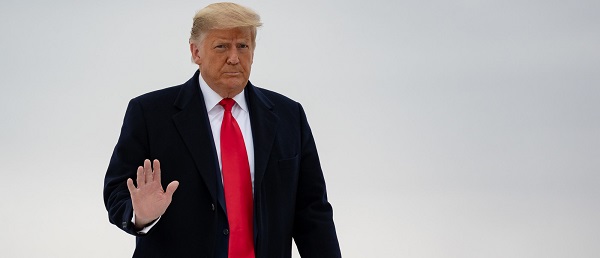Business
Argentina’s First Budget Surplus in 123 Years

Argentina has posted its first budget surplus in 123 after President Javir Milei took office and demanded an abrupt halt to government spending. Governments worldwide should carefully take note.
Milei proudly announced:
“The deficit was the root of all our evils — without it, there’s no debt, no emission, no inflation. Today, we have a sustained fiscal surplus, free of default, for the first time in 123 years. This historic achievement came from the greatest adjustment in history and reducing monetary emission to zero. A year ago, a degenerate printed 13% of GDP to win an election, fueling inflation. Today, monetary emission is a thing of the past.”
Economic emissions should become a coined phrase as it is far more harmful than anything government is currently trying to conquer.
Argentina was forced to stop printing money back in 2022 after inflation surpassed 60% in July of that year, and their currency became utterly worthless. The central bank raised rates to nearly 70% to no avail as government continued borrowing. The problem with socialism is that they eventually run out of other people’s money. The government was spending over $6 million daily on social programs, but the poverty rate continued to rise, and around 57% of the working population could not find jobs. There were mass strikes since their money could not fund basic goods. Even if they could find employment, what incentive would the people have when the currency is worthless? Since they had no way to pay off their debt, the government simply continued to print more and devalued its own currency in the process.
Javir Milei was called a right-wing extremist for denouncing socialism and promising to curtail government spending and social programs. He understood that socialism COULD NOT WORK. It took President Javier Milei of Argentina a mere two months to push his nation into a surplus. The Economy Ministry declared that the government posted a $589 million surplus back in April, the first surplus in a decade. Milei referred to the government as “a criminal organization,” and recognized that the public sector needed to shrink as 341,477 people were on the government payroll when he took office.
Referred to as the “gnocchi” after the Italian pasta dish that is commonly served on the 29th of the month, the same day as payday, are the individuals in Argentina on the government payroll who do absolutely nothing. They were installed by politicians in exchange for favors. Critics claim he is firing at random, but the Milei Administration has assured the public that selecting those who will be laid off will be an “extremely surgical task, done so as not to make mistakes.”
Milei has already eliminated useless agencies such as the Ministry of Culture, Ministry of Health, Ministry of Labor, and Ministry of Social Development. In his words, Argentina is currently a poor country and cannot afford these departments that do absolutely nothing to improve the nation’s economic conditions. He has cut the Cabinet in half and no one has noticed a difference.
Milei removed price controls and devalued the currency by 54%. Transport and fuel subsidies were eliminated. It was noted that these measures would at first hurt PPP before the economy could begin to heal. Imagine inflation cooling in February at 276% — the situation was dire. The International Monetary Fund awarded Argentina a $44 billion credit program. The nation is beginning to stabilize very slowly, and it took decades of deteriorating economic conditions for someone to come in and clean house.
He has called his measures a form of “shock therapy” for Argentina’s economy. Milei agreed to devalue the nation’s peso from around 350 to 800 pesos per USD. He has eliminated quotas on imports and exports and removed the licensing that was difficult to obtain. There is a temporary rise in taxes for non-agricultural trade that brings it on par with industry standards. Transportation and energy subsidies have been eliminated.
Milei is the same man who stood before the crowd at Davos and criticized their glorification of socialism. “The main leaders of the Western world have abandoned the model of freedom for different versions of what we call collectivism,” Milei said to a hostile crowd at Davos. “We’re here to tell you that collectivist experiments are never the solution to the problems that afflict the citizens of the world—rather they are the root cause.”
Those in charge want us to believe that capitalism equates to greed while collectivism is seen as a form of social justice but, of course, requires the money of others. Free enterprise is under constant attack, and Milei is one of the only world leaders fighting for its existence. “Social justice is not just. It doesn’t contribute to the general well-being,” Milei said to Davos, citing that socialism is “intrinsically unfair” and forces the state to attack the people for taxes. “Can any of us say that they voluntarily pay taxes?” he asked the crowd.
He was once called the Donald Trump of Argentina. We can hope that Donald Trump will take swift action to reduce government spending. DOGE appointee Elon Musk congratulated Argentina’s president when news of the budget surplus broke. Unfortunately, America is too far in the hole to recover by slashing programs or cutting government. It would be a massive step forward but our deficit has been permitted to run wild for too long to be tamed.
Business
Is Government Inflation Reporting Accurate?


 David Clinton
David Clinton
Who ya gonna believe: official CPI figures or your lyin’ eyes?
Great news! We’ve brought inflation back under control and stuff is now only costing you 2.4 percent more than it did last year!
That’s more or less the message we’ve been hearing from governments over the past couple of years. And in fact, the official Statistics Canada consumer price index (CPI) numbers do show us that the “all-items” index in 2024 was only 2.4 percent higher than in 2023. Fantastic.
So why doesn’t it feel fantastic?
Well statistics are funny that way. When you’ve got lots of numbers, there are all kinds of ways to dress ‘em up before presenting them as an index (or chart). And there really is no one combination of adjustments and corrections that’s definitively “right”. So I’m sure Statistics Canada isn’t trying to misrepresent things.
But I’m also curious to test whether the CPI is truly representative of Canadians’ real financial experiences. My first attempt to create my own alternative “consumer price index”, involved Statistics Canada’s “Detailed household final consumption expenditure”. That table contains actual dollar figures for nation-wide spending on a wide range of consumer items. To represent the costs Canadian’s face when shopping for basics, I selected these nine categories:
- Food and non-alcoholic beverages
- Clothing and footwear
- Housing, water, electricity, gas and other fuels
- Major household appliances
- Pharmaceutical products and other medical products (except cannabis)
- Transport
- Communications
- University education
- Property insurance
I then took the fourth quarter (Q4) numbers for each of those categories for all the years between 2013 and 2024 and divided them by the total population of the country for each year. That gave me an accurate picture of per capita spending on core cost-of-living items.
Overall, living and breathing through Q4 2013 would have cost the average Canadian $4,356.38 (or $17,425.52 for a full year). Spending for those same categories in Q4 2024, however, cost us $6,266.48 – a 43.85 percent increase.
By contrast, the official CPI over those years rose only 31.03 percent. That’s quite the difference. Here’s how the year-over-year changes in CPI inflation vs actual spending inflation compare:
As you can see, with the exception of 2020 (when COVID left us with nothing to buy), the official inflation number was consistently and significantly lower than actual spending. And, in the case of 2021, it was more than double.
Since 2023, the items with the largest price growth were university education (57.46 percent), major household appliances (52.67 percent), and housing, water, electricity, gas, and other fuels (50.79).
Having said all that, you could justifiably argue that the true cost of living hasn’t really gone up that much, but that at least part of the increase in spending is due to a growing taste for luxury items and high volume consumption. I can’t put a precise number on that influence, but I suspect it’s not trivial.
Since data on spending doesn’t seem to be the best measure of inflation, perhaps I could build my own basket of costs and compare those numbers to the official CPI. To do that, I collected average monthly costs for gasoline, home rentals, a selection of 14 core grocery items, and taxes paid by the average Canadian homeowner.¹ I calculated the tax burden (federal, provincial, property, and consumption) using the average of the estimates of two AI models.
How did the inflation represented by my custom basket compare with the official CPI? Well between 2017 and 2024, the Statistics Canada’s CPI grew by 23.39 percent. Over that same time, the monthly cost of my basket grew from $4,514.74 to $5,665.18; a difference of 25.48 percent. That’s not nearly as dramatic a difference as we saw when we measured spending, but it’s not negligible either.
The very fact that the government makes all this data freely available to us is evidence that they’re not out to hide the truth. But it can’t hurt to keep an active and independent eye on them, too.
Subscribe to The Audit.
For the full experience, upgrade your subscription.
2025 Federal Election
Carney’s Hidden Climate Finance Agenda

From Energy Now
By Tammy Nemeth and Ron Wallace
It is high time that Canadians discuss and understand Mark Carney’s avowed plan to re-align capital with global Net Zero goals.
Mark Carney’s economic vision for Canada, one that spans energy, housing and defence, rests on an unspoken, largely undisclosed, linchpin: Climate Finance – one that promises a Net Zero future for Canada but which masks a radical economic overhaul.
Regrettably, Carney’s potential approach to a Net Zero future remains largely unexamined in this election. As the former chair of the Glasgow Financial Alliance for Net Zero (GFANZ), Carney has proposed new policies, offices, agencies, and bureaus required to achieve these goals.. Pieced together from his presentations, discussions, testimonies and book, Carney’s approach to climate finance appears to have four pillars: mandatory climate disclosures, mandatory transition plans, centralized data sharing via the United Nations’ Net Zero Data Public Utility (NZDPU) and compliance with voluntary carbon markets (VCMs). There are serious issues for Canada’s economy if these principles were to form the core values for policies under a potential Liberal government.
About the first pillar Carney has been unequivocal: “Achieving net zero requires a whole economy transition.” This would require a restructuring energy and financial systems to shift away from fossil fuels to renewable energy with Carney insisting repeatedly in his book that “every financial [and business] decision takes climate change into account.” Climate finance, unlike broader sustainable finance with its Environmental, Social, and Governance (ESG) focus would channel capital into sectors aligned with a 2050 Net Zero trajectory. Carney states: “Companies, and those who invest in them…who are part of the solution, will be rewarded. Those lagging behind…will be punished.” In other words, capital would flow to compliant firms but be withheld from so-called “high emitters”.
How will investors, banks and insurers distinguish solution from problem? Mandatory climate disclosures, aligned with the International Sustainability Standards Board (ISSB), would compel firms to report emissions and outline their Net Zero strategies. Canada’s Sustainability Standards Board has adopted these methodologies, despite concerns they would disadvantage Canadian businesses. Here, Carney repeatedly emphasizes disclosures as the cornerstone to track emissions data required to shift capital away from “high emitters”. Without this, he claims, large institutional investors lack the data on supply chains to make informed decisions to shift capital to businesses that are Net Zero compliant.
The second pillar, Mandatory Transition Plans would require companies to map a 2050 Net Zero trajectory for emission reduction targets. Failure to meet those targets would invite pressure from investors, banks, or activists, who may pursue litigation for non-compliance. The UK’s Transition Plan Task Force, now part of ISSB, provides this standardized framework. Carney, while at GFANZ, advocated using transition plans for a “managed phase-out” of high-emitting assets like coal, oil and gas, not just through divestment but by financing emissions reductions. “As part of their transition planning, [GFANZ] members should establish and apply financing policies to phase out and align carbon-intensive sectors and activities, such as thermal coal, oil and gas and deforestation, not only through asset divestment but also through transition finance that reduces real world emissions. To assist with these efforts GFANZ will continue to develop and implement a framework for the Managed Phase-out of high-emitting assets.” Clearly, the purpose of this is to ensure companies either decarbonize or face capital withdrawal.
The third pillar is the United Nations’ Net Zero Data Public Utility (NZDPU), a centralized platform for emissions and transition data. Carney insists these data be freely accessible, enabling investors, banks and insurers to judge companies’ progress to Net Zero. As Carney noted in 2021: “Private finance is judging…banks, pension funds and asset managers have to show where they are in the transition to Net Zero.” Hence, compliant firms would receive investment; laggards would face divestment.
Finally, voluntary carbon markets (VCMs) allow companies to offset emissions by purchasing credits from projects like reforestation. Carney, who launched the Taskforce on Scaling VCMs in 2020, has insisted on monitoring, verification and lifecycle tracking. At a 2024 Beijing conference, he suggested major jurisdictions could establish VCMs by COP 30 (planned for 2025 in Brazil) to create a global market. If Canada mandates VCMs, businesses especially small and medium enterprises (SMEs) would face much higher compliance costs with credits available only to those that demonstrate progress with transition plans.
These potential mandatory disclosures and transition plans would burden Canadian businesses with material costs and legal risks that constitute an economic gamble which few may recognize but all should weigh. Do Canadians truly want a government that has an undisclosed climate finance agenda that would be subservient to an opaque globalized Net Zero agenda?
Tammy Nemeth is a U.K.-based strategic energy analyst. Ron Wallace is an executive fellow of the Canadian Global Affairs Institute and the Canada West Foundation.
-

 2025 Federal Election1 day ago
2025 Federal Election1 day agoCanada’s press tries to turn the gender debate into a non-issue, pretend it’s not happening
-

 International1 day ago
International1 day agoPope Francis’ body on display at the Vatican until Friday
-

 2025 Federal Election2 days ago
2025 Federal Election2 days agoBREAKING: THE FEDERAL BRIEF THAT SHOULD SINK CARNEY
-

 Media2 days ago
Media2 days agoCBC retracts false claims about residential schools after accusing Rebel News of ‘misinformation’
-

 International2 days ago
International2 days agoNew York Times publishes chilling new justification for assisted suicide
-

 2025 Federal Election1 hour ago
2025 Federal Election1 hour agoStudy links B.C.’s drug policies to more overdoses, but researchers urge caution
-

 conflict22 hours ago
conflict22 hours agoMarco Rubio says US could soon ‘move on’ from Ukraine conflict: ‘This is not our war’
-

 Business17 hours ago
Business17 hours agoChinese firm unveils palm-based biometric ID payments, sparking fresh privacy concerns








